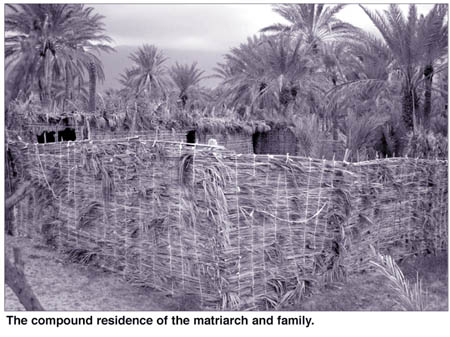
Gyrif: A tradition of communal self-help in Soqotra (Part 1 of 2) [Archives:2002/50/Reportage]
December 9 2002

SERGE D. ELIE1
[email protected]
Gyrif is a Soqotri term for invitation, which is actually a special request for assistance addressed to next of kin, community neighbors or people with whom the requester is well acquainted. In practice it refers to a form of mutual aid undertaken by communities to assist one member when a task necessitates the collective input of all members. Of course, this is a form of activity that is practiced in all cultures around the world, including mainland Yemen, especially in the rural milieu, but under various names and with differentiating features.
In Soqotra all cultural-economic groups practice it: Bedouin pastoralists, fishermen, and agropastoralist communities. The one calling on the community for assistance assumes the responsibilities and costs associated with organizing it, and the participants contribute their labor or expertise. A Gyrif can be called for any activity whose scale requires communal input, and sometimes for the organization of some of the major life events such as weddings. In the context of Soqotra, organizing a Gyrif tends to be based on the major needs generated by the livelihood activities within a particular ecological milieu.
For example, in places where access to water is a problem, a Gyrif might be organized for the construction of a Karif (a water reservoir). In other places where wood is a major natural resource, as in the forested area of Ayhaft, a Gyrif could be undertaken for the cutting of wood for sale or house construction. However, in instances where the benefits are communal and not just individual the participants share some of the costs in addition to contributing their labor.
In the case of the Gyrif that I observed, a “matriarch” had called for it, and the participants were agropastoralists as well as fishermen from the community of Soqotrans of African descent in Hadiboh and some of its satellite villages. All of the participants were her relatives. The work involved the construction of a living compound called Arish in Soqotri and is made up entirely of palm tree (Timrih) material: the dead and dried tree trunks (Gud’), palm-ribs (Mijrid), palm leaflets (Fir’) and the rope (Hatmi) made from the palm tree fiber.
The compound was to serve as the residence of the “matriarch” and an extended family of thirteen during the Horf (summer monsoon) season. Once completed it is called Mahjir, which means literally the “place of the guard” in Soqotri, but refers to a temporary dwelling used only during the monsoon season, and where people stay while caring for date palm trees, prior to harvesting time.
The site where the Mahjir was to be built was approximately 150 square feet enclosure with a dry well and perhaps a hundred of mostly mature palm trees. Their productivity seemed depressed as most of the trees had relatively few dates, and many were barren. The harvest promised to be meager and may not last beyond the Ramadan period, as it did not rain this season and there was no hope for more rains at that late stage of the date growing season. It is located in the area of Arhino, which is within less than five kilometers from Hadiboh. The area is dedicated to the cultivation of date palm trees, as it is within the vicinity of wadi Arhino.
This was the kind of place that Hadiboh once resembled prior to its urbanization, and which perhaps led to its original designation as Tamarida, which is the latinized version of the Arabic word for date, tamr. The place was not really a village as there seemed to be no permanent residences there, but a demarcated space for palm trees plantation, which is parceled out among different owners by a network of fences. In fact, the area of Arhino is the place of choice for anyone in Hadiboh wishing to establish a palm tree garden. It seems that all it takes is to find a lot without a protective demarcation and which suits the preference of the potential cultivator.
While a Gyrif usually lasts one day, preparing for it is a time consuming endeavor. This one took two months of preparation. The collection of all the palm tree materials and their assembling into the different parts needed for the house was a major undertaking, as they were not bought from the market but prepared by hand.
Continued next issue
——
[archive-e:50-v:2002-y:2002-d:2002-12-09-p:./2002/iss50/report.htm]


